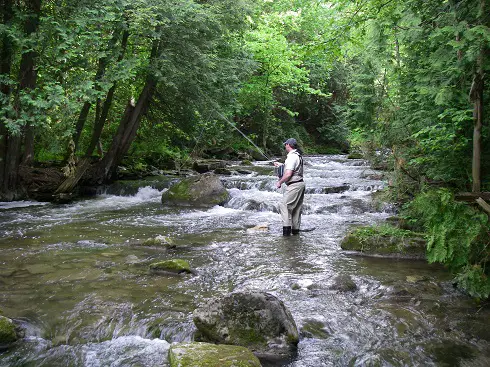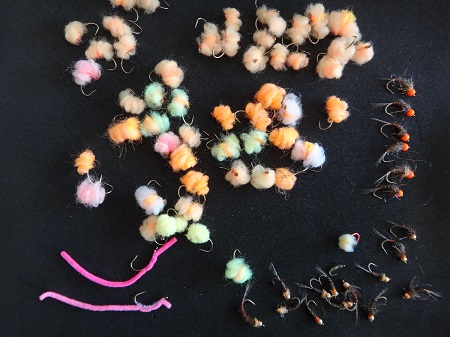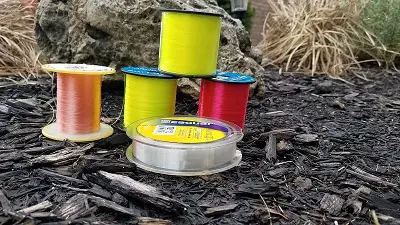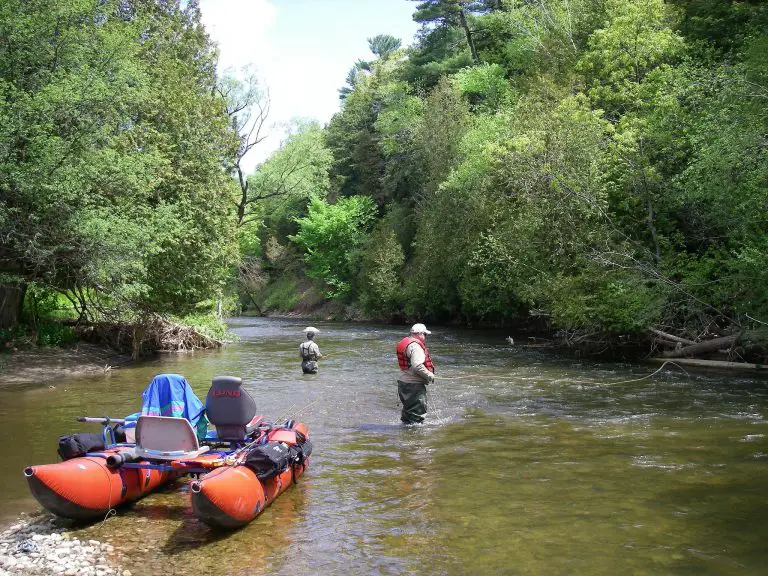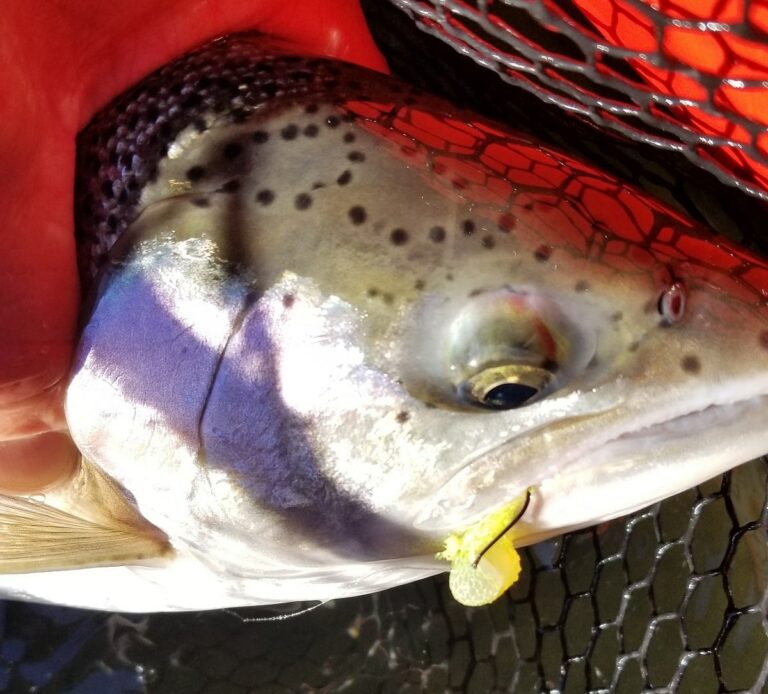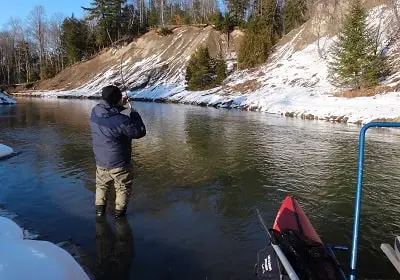Guide Tactics For More Spring Steelhead
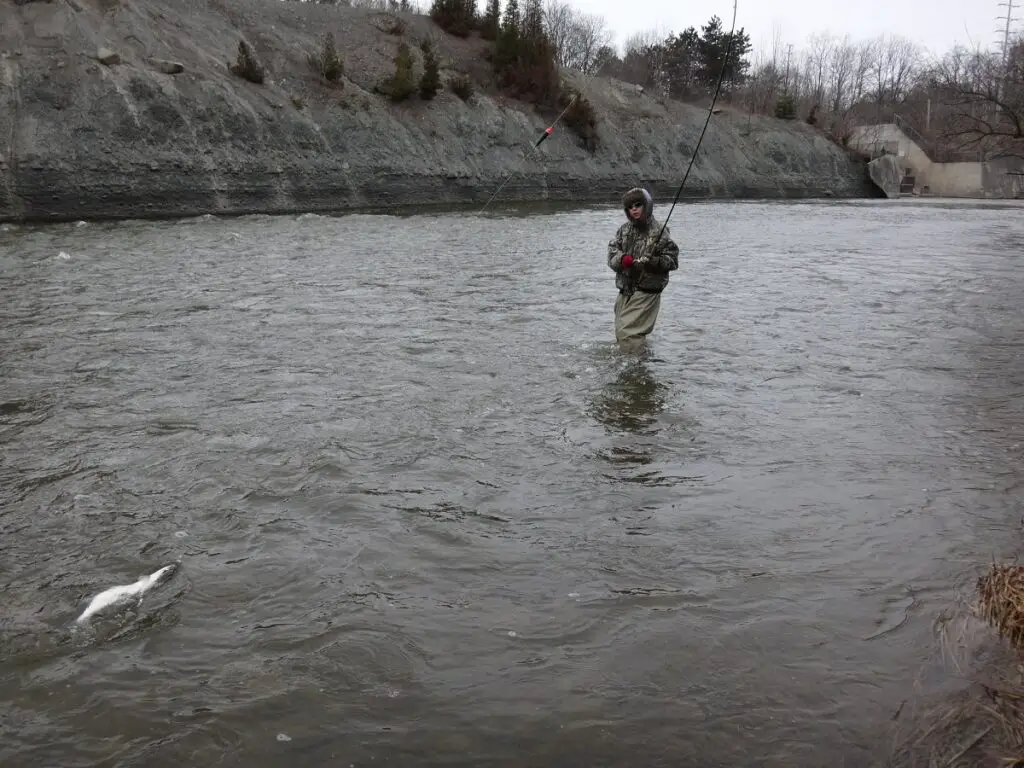
Without question, spring steelhead fishing is starting earlier than it did when I started fishing steelhead over 37 years ago. For many anglers, spring is the best time to fish for steelhead.
Many rivers will have summer and winter-run steelhead holding in the rivers throughout the winter and when the rivers start becoming ice-free, many of the late winter and spring-run steelhead start showing up. This is often when the most steelhead are in the river at one time.
March has some of the best fishing of the year with the majority of steelhead entering the river. Late February can also be very good in warmer years. Anglers should pay close attention to the weather and river conditions to ensure they are on the river during the being runs of steelhead.
These are five key things I know and do as a guide to ensure my clients and I have the most success. If you want to maximize your success on the river, you should do these too.
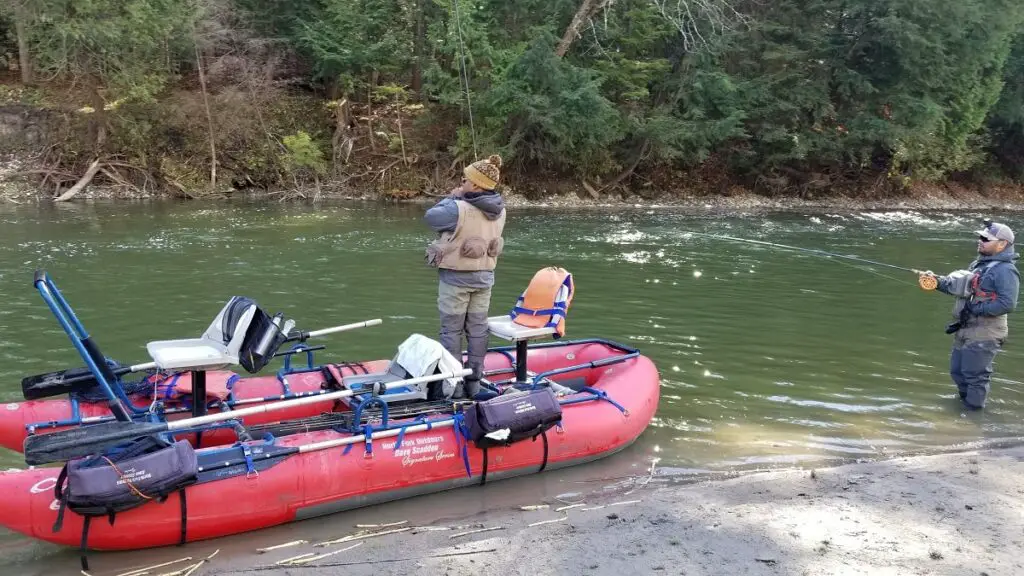
1. Know When They Run
The two main things that make the steelhead run are the biological urge to spawn, and the right conditions to make the river suitable for migration.
There is nothing you need to do about the urge to spawn, but good anglers and guides know that if you pay close attention to environmental conditions, you can predict, with some accuracy, when the steelhead will enter the rivers and when the best fishing times are.
And trust me, this matters a lot. An average angler might fish ten days over the spring and catch ten steelhead, while a knowledgeable angler might fish ten days and catch 100 steelhead.
The difference is that the knowledgeable angler is on the river only when the fishing is good and he avoids the slow fishing days when the average angler goes fishing. I know guys that do this for trout and other species too.
There are ways to help you predict the runs which I will discuss below.
Weather
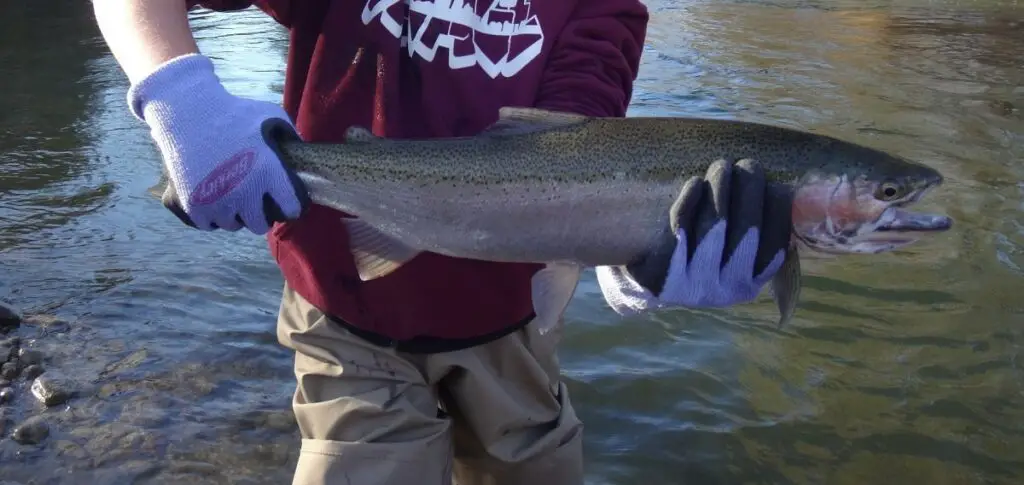
Warm Temperatures: Warm days that melt snow and ice can break up river ice and open the river up for fishing. The melting snow can increase water flows, bringing in the first push of steelhead.
Some steelhead will even enter the river under the ice on deeper slower rivers, so once the river opens, the steelhead are there for the anglers.
Rains: Rains, especially heavier rains, will raise water levels, which can also entice steelhead to run.
But just because the rivers rise and the steelhead start running doesn’t mean the fishing will be good.
River Conditions
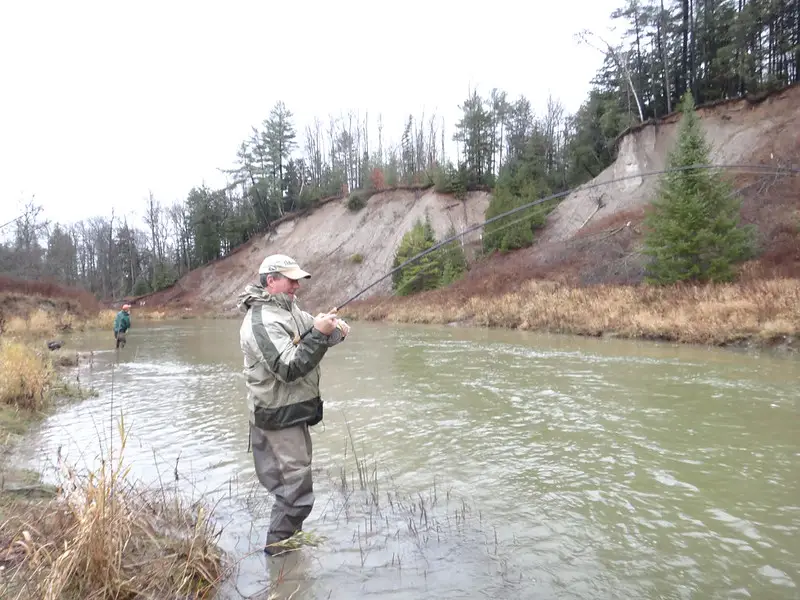
I’ve already mentioned increased water flows to trigger the runs, but with increased flows, you can get high dirty water, which can make fishing impossible and even dangerous.
The key to fishing success in the spring is being on the river just as the river starts to clear. Water clarity is very important.
Water Clarity: I tell my clients that if I stand in 8 inches of water and I can’t see the tops of my boots, we aren’t catching anything. But if I can see the bottom in 8 to 12 inches of water, I will catch some fish. 12 to 18 inches of visibility is when things really start heating up. 16 to 22 inches of clarity is when the rivers turn that greenish color.
Green Water: I’ve heard that green-colored water is called steelhead green, pea green, and slaughter water. The reason is that when the river turns that color the fishing can be fantastic.
Dropping Water Vs. Rising Water: In my experience, dropping water levels usually results in good fishing, but rising water levels, especially quick rising water, result in poor fishing.
Rising water is getting dirtier, dropping water is getting clearer.
Clear Water and Low Water: When the water gets very clear, or low and clear, the steelhead will move mostly at night and they will hold during the day.
Pro Tip: Knowing the clearing time and how fast different rivers clear can be a huge benefit. Most steelhead rivers in the USA and Canada are monitored and you can check a website to see the water flows. Knowing what flow level is low, what is perfect, and what is too high to fish can help you determine which river to fish, and when.
- In the USA – https://waterdata.usgs.gov/nwis/rt
- In Canada – https://wateroffice.ec.gc.ca/mainmenu/real_time_data_index_e.html
I provide tips and strategies for learning how to read the stream flow charts and how to know when the fishing or the river conditions are good or bad for fishing. See them on my other website on the page Stream Flow Data Interperatation For Fishing.
Networking
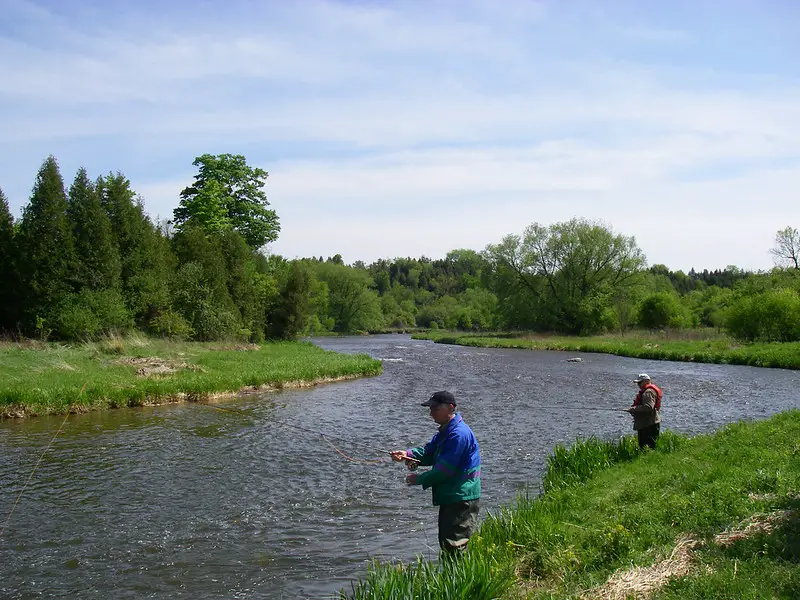
I owe a lot of fish and my successful days of fishing to my fishing buddies.
I’m only one guy, so knowing when all the rivers are in good shape, or when the fish are running is hard to do all on my own.
I network with a few guys, that network with a few guys, and so on. Anytime I need to know the shape of a river, or how the fishing is, I send out some texts, and I can usually get some good intel. And, my budies know I will share information if they need it.
Last season, a client messaged me to see if I was available to guide him because, after six days of fishing for spring steelhead, he had not caught a steelhead. However, I’d received a text from a buddy the day before who told me that he and his brother hooked over 60 steelhead in half a day of fishing.
Sometimes, a successful fishing trip is just knowing when and where to be. For this reason, I recommend finding like-minded guys to form a small network of guys, all for the purpose of helping each other out. Trust me, this can make a huge difference.
2. Know Where To Fish
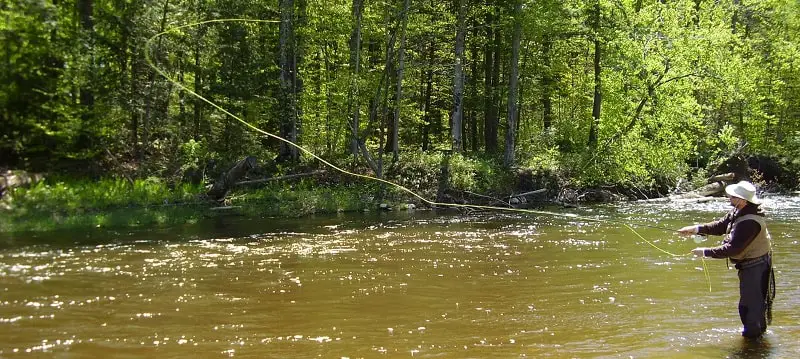
Do some research and find out which rivers in your area have good runs of spring steelhead, as well as good access and are legally open to fishing.
Knowing the rivers to fish and when to fish them is another skill you should learn. Just because one river is getting a massive run of steelhead doesn’t mean all the rivers in the area are.
This is where networking and water levels are important. I’ve had fantastic days on one river, while other nearby rivers are slow.
Know The Best Rivers
Whether you are on the West Coast or on the Great Lakes, there are hundreds of rivers and streams that get runs of steelhead. Too many to list here.
But, if you are new to fishing and don’t know where to fish, these are some ideas for you.
- Local Fly Shops and Fishing Store: Go in and ask them where to fish and what is fishing well.
- Local Guides Websites: Many local guides’ websites list the rivers that they guide on for steelhead. If it’s good enough for the guides, it’s good. Just don’t call or email the guides and ask them where to fish if you are not planning on booking a trip. They are not an information service and they are often very busy with paying clients and their own families.
Know What Sections Of The Rivers To Fish
I have heard it many times “You should have been here yesterday!” Steelhead are migratory, which means yesterday a run of fish may have been in that section, but now they are gone.
I have learned how to predict the sections of the river that should hold fish, and I follow them up the river as they move. As an example;
- Day 1 after rain: I fish the lower two to five miles of river and target fresh runs of fish.
- Day 2: I fish the section four to ten miles up the river because the “day 1 fish” should have moved up there by now.
- Day 3: I fish ten to fifteen miles up from the mouth of the river.
Many anglers do not do this. They only fish the lower section or only fish the upper section and the same spots each day.
I fish where the fish are concentrated based on the runs and the conditions, which enable me to catch a lot more steelhead.
Every river is different. On some rivers, the fish move faster, while on other rivers they move slower. Therefore, I predict the speed at which they move, which is based on the depth of the river, speed of current, obstructions in the river such as rapids, dams, or shallow water.
3. Know Your Method
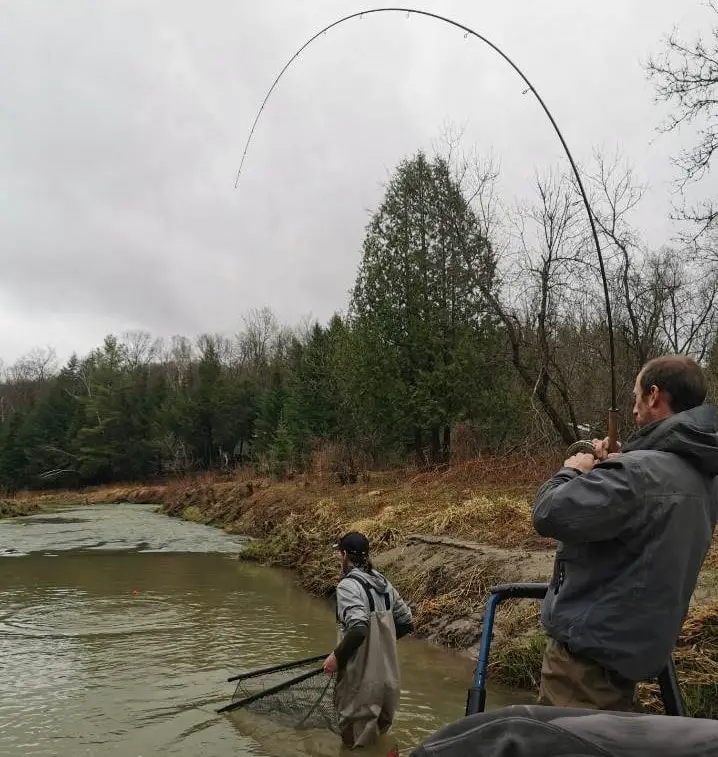
Use the right method, or at the very least, know how to use the method of your choosing.
I’ll be honest with you: After guiding thousands of anglers, I have noticed that most guys (around 80 Percent) barley fish well enough to consistently catch steelhead.
My first goal on every guide trip is to teach my clients something. I’ve always said, “I can’t control the fish biting, but I can control how much I teach my clients,” so if the fish do not bite, my clients will leave with the ability to catch a lot more fish in the future.
It’s probably why I get so many guys telling me after their guide trip that they now catch ten times more fish than before.
If you don’t fish well, you don’t catch well. This is why you should learn how to do your chosen method very well. This website is a free resource to help you with that.
Presentation
Presentation is the key to catching fish right? Wrong!
It’s only one of the keys to catching fish. Even a guy like me, with all my knowledge, will struggle to catch fish if I use the wrong setup, which includes the wrong leader or hook, or have a bad bait, or even stomp into the river and spook all the fish.
Your presentation is nearly useless if you don’t do the other things well.
So, ensure you use a proven effective leader setup, on a good rod, reel, and line.
Know how to get your bait into the strike zone, keep it there, and fish it well.
Baits
There are two types of baits for steelhead. Low percentage baits, and high-percentage baits. I go onto Facebook Groups or Reddit Groups and see guys recommending all kinds of nearly useless baits because they caught a steelhead on it.
Guides use certain baits, they use them all the time, they rotate through the same baits based on the conditions and what the fish want, and, they DO NOT use low percentage baits that many angler use.
Stick with:
- Spawn Sacs
- Beads
- Live worms and plastic worms in pink, red, and brown.
- Skein
- Shrimp (West Coast)
- Flies
If you do not see a bait on this list, don’t use it!!
4. Use the Right Gear
Rod And Reel: Use the right rod and reels for the job. This will provide a better presentation and enable you to land the fish better.
Line: Good lines make a big difference, trust me. Some clients come out on guide trips with me and bring their own rods and reels sometimes, and I see them struggle because of crappy fishing line.
Other Gear: Get a good landing net, and gear such as waders, packs, vest, and release tools.
5. Understand The Spawning Stages
Spring steelhead will feed and hold differently throughout their spring run.
As a steelhead guide, I adapt to the stage the steelhead are in to ensure that I and my clients can consistently catch the most steelhead.
Stage #1
These are the fresh-run fish or fish that are moving up the river. These steelhead will stop and hold in deeper sections and will feed which is where anglers should target them.
They will eat bigger and brighter baits and lures because they are agressive.
Stage #2
Spawning fish, which are the ones on the spawning beds should be left alone.
Don’t be drawn in by ten big steelhead in one foot of water that look like easy targets. You see them, they see you!
These fish DO NOT want to eat!!! If you hook one you probably snagged it.
These steelhead fight poorly, don’t eat so are harder to catch, and they taste like crap.
Also, good anglers see you as the idiots who can’t catch fish and need to snag them!!
Lastly, there are much easier fish to catch!!
I don’t know how many times I’ve seen a guy 50 feet upriver of me trying to catch 7 steelhead on a spawning bed for an hour and not catching anything, or snagging a few that he loses, while I know the pool below and above those spawning fish are full of hungry feeding fish that are rested, agressive, and fight well.
For every one steelhead the idiot catches on the spawning bed, I catch three to five.
Guys, leave the spawners alone, let them reproduce!! Also, in many areas snagging is illegal. Instead, fish for the ones in Stage #1 and Stage #3, they are sooo much easier to catch and they fight ten times better.
Stage #3
Stage three steelhead have finished spawning and are dropping back to the Lake or Ocean. Guys will call these drop-backs, or drop-downs. These steelhead will hold in pools, deeper riffle water, and in pockets.
These fish are rested, hungry, feeding, and aggressive, so they will bite any well-presented bait, fly, or lure. They also fight better and taste better than steelhead on the spawning bed.
Hope that helps you catch more spring steelhead this year.
Graham

